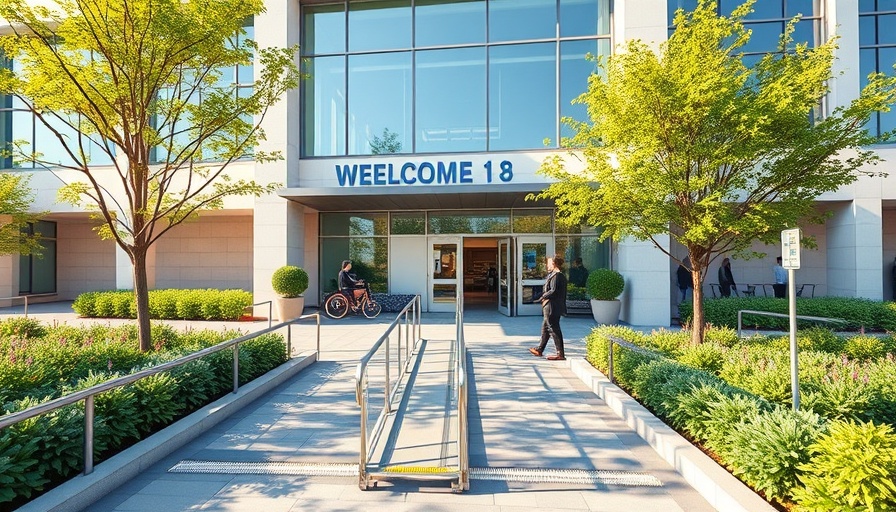
Understanding the Impact of ADA Compliance on Bathroom Renovations
When it comes to bathroom renovations, ensuring compliance with the Americans with Disabilities Act (ADA) is vital not only for legal reasons but also to create inclusivity. ADA compliance allows your space to be usable for everyone, which can significantly enhance the independence of individuals with disabilities. Those looking to remodel their bathrooms often underestimate the importance of these guidelines, but they are essential for promoting dignity and accessibility.
Ignoring ADA standards can lead to significant complications, including costly retrofitting down the line. It's a wise investment to adhere to these practices from the outset, as non-compliance may not only require additional spending but could also lead to legal ramifications and penalties. Thus, understanding these regulations upfront is beneficial.
Key Considerations for ADA-Compliant Bathroom Layouts
One critical aspect of ADA compliance is designing layouts that accommodate proper dimensions. For instance, your bathroom stalls must be at least 60 inches wide to facilitate comfortable movement for wheelchair users. Furthermore, the sink height must not exceed 34 inches, making it accessible for those who may be seated. Grab bars should be installed between 33 to 36 inches from the floor and be capable of supporting a minimum weight of 250 pounds.
Along with dimensions, the flow of space matters greatly—available pathways should have a minimum width of 36 inches to dovetail with the maneuverability required for users with mobility challenges. This understanding of dimensions can help avoid awkward layouts that hinder accessibility.
Choosing the Right Fixtures and Features
Emphasizing the selection of fixtures is paramount in ensuring both compliance and usability in your renovated space. A vital piece of equipment in any ADA-compliant bathroom is the toilet. Ideally, toilets should be installed between 17 to 19 inches tall, ensuring ease of use for individuals with mobility impairments. Furthermore, the flush lever must require minimal effort for operation.
When it comes to sinks, opt for lever handles instead of knobs, which are easier for those without wrist strength. Ideally, sinks should include adjustable heights or at the very least, provide enough under-sink clearance for wheelchair access. Consider also the type of showers and baths; a zero-threshold shower provides easy access and minimizes the need for complex maneuvers.
Avoiding Common Pitfalls in Bathroom Renovations
To ensure your renovation effort is fruitful, familiarize yourself with common mistakes. Many homeowners overlook the practical aspects surrounding the functional use of their upgrades, such as the height of towel racks or the need for anti-slip flooring. A bathroom that isn't thoughtfully planned with ADA in mind may leave users feeling frustrated and unsafe. Your goal should be to develop a space that reflects both beauty and compliance.
Before proceeding with your renovation, engage professionals with knowledge of ADA requirements. Existing research highlights that a staggering percentage of homeowners fail to implement accessible design elements, thus failing to realize potential grants, assistance, and favorable evaluations. Reach out to experienced contractors and consultants who specialize in accessibility to develop a sound plan.
Future Predictions: The Shift Towards More Inclusive Design
The future of bathroom renovations leans towards inclusivity, as more homeowners recognize the importance of accessibility. As the population ages, the DIY mentality continues to shift towards a greater awareness of individual needs. It’s anticipated that regulations surrounding ADA compliance will become even more stringent—propelling a spike in knowledgeable contractors specializing in accessibility.
Adapting spaces for universal use is not merely a trend but is becoming an expectation. Homeowners who proactively embrace ADA standards will be ahead of the curve, tapping into a growing market of inclusion-minded renovations.
Empowering Yourself with Knowledge on Bathroom Safety
Knowledge is power. By committing to learn more about ADA compliance guidelines, homeowners can make informed decisions that genuinely promote safety and accessibility in their homes. This educational journey is rewarding, as every improvement made not only helps present needs but also safeguards future challenges and accessibility requirements.
Remember, the objective of your remodeling efforts is not just to create a beautiful space but also a functional one. In the process, you'll find resources like books, online guidelines, and local seminars invaluable for ongoing education.
For anyone considering a bathroom renovation, taking the proper steps to understand ADA compliance is key. As you navigate your project, keep this guide close at hand to steer clear of pitfalls and make the most significant impact. And remember, for a thorough understanding of your options and the latest trends in ADA compliance, continuous education and community engagement are vital.
Take Action: Ensure Your Bathroom Renovation is ADA Compliant
As you embark on your bathroom renovation journey, ensure you take the necessary steps to comply with ADA guidelines. This not only protects you from future legal and financial consequences but also profoundly affects the quality of life for users with disabilities. Seek professional guidance to facilitate your renovations, and embrace the shift toward more inclusive living.
 Add Row
Add Row  Add
Add 




Write A Comment